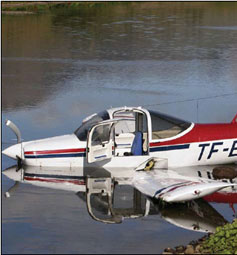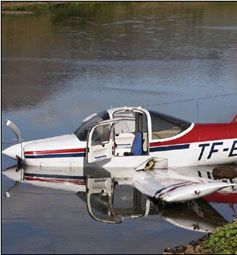In April 27, 2000, a Canadian commercial helicopter pilot who was also a chief helicopter flight instructor took off on a test flight with a maintenance engineer in a Bell 206 JetRanger from an airport in Quebec. Five minutes later, they disappeared from radar. The Transportation Safety Board of Canada determined rather quickly that the main rotor hub and rotor blades had departed the aircraft in flight. What makes this accident worth discussing is that both individuals knew that the mast nut, which retains the rotor head in place atop the mast,

The answer is human error, of course. (Foul play was ruled out, in case youre wondering.) People get distracted and complacent; they make assumptions and they see what they expect to see during a preflight inspection. But…the mast nut? (In the Robinson helicopters Im familiar with, a similar item holds the main rotor assembly on, and it goes by the colloquial name of the “Jesus bolt,” for obvious reasons.)
Unlike airplanes, from which you would have to painstakingly remove various fairings to see the bolts holding the wings onto the fuselage, in helicopters it sticks out like a sore thumb for all to see, and is always a de rigueur preflight inspection item, according to the aircraft flight manual-as well as ones basic instincts for self-preservation. Despite the fact that only one of every few dozen airplane pilots also flies rotary-wing machines, there are lessons to be learned here for all of us. The sidebar on page 18 explores the events leading up to this accident in greater detail.
How Oversights Happen
My preference would be to keep lifes ironies confined to a much smaller scale. In this case, though, no entries were made in any logs, job lists, inspection sheets or anywhere (contrary to Canadian regulations), and there were no warning notices or flags in the cockpit indicating that the aircraft was temporarily non-airworthy (which is
not actually required, believe it or not). Ironically, this hired instructor pilot had also taken a Transport Canada decision-making course just over a year earlier which covered performance issues and how to counteract human errors.It was noted that the 15-year AME
had worked 12-hour days, nearly seven days a week, for the last several months. Although it was thought likely that the pilot had not explicitly been made aware that the mast nut had been removed, both the mast nut and droop restrainers can be seen not only from the cockpit roof, but also from the ground.
The pilots peers had considered him to be a conscientious pilot who didnt neglect pre-flight checks. As mentioned, the other two people who had participated in removal of the critical parts were also present when the aircraft took off. One would guess that they simply didnt remember. It is also quite likely that the pilot felt secure, knowing that the responsible AME was on board with him when he took off.
Trust but verify
What does this kind of blatant, would-never-happen-to-me rotary-wing omission have to do with us, who are mostly airplane pilots who dont have to contend with machines made up of hundreds of perfectly coordinated moving parts, whirling madly around in formation? Just this: A dangerous kind of “uncoordinated” flight results when two pilots of equal experience are in the same cockpit and their responsibilities have not been clearly delineated.
In retrospect, a flight like this one, where the pilot may have abbreviated or deferred a proper preflight (because, after all, he had an experienced AME aboard to vouch for the aircrafts airworthiness) was more than dangerous-it was deadly. Perhaps he
had done a preflight, but he had just overlooked that one missing part. Perhaps he didnt want to risk offending the AME with a walk-around.After all, how many times has it happened to you? You do a meticulous preflight, and then the CFI comes out to the airplane and checks the fuel and oil. I know how that used to make
me feel: “Hel-lo? Do you really think I wouldnt check that, pal?” But egos belong on the ground, folks. Dont take it personally. (Ive learned not to.) Call it a healthy mistrust of human nature (including mine). Call its opposite complacency.Yes, the AMEs got jerked around a bit. Yes, the chief AME was horrendously overworked, and fatigue was probably an issue. And yes, the pilot took that technician “out of his groove” by making his impromptu request. I know I absolutely
despise when Im in the middle of something, and someone-coworker or muckety-muck-yanks me away to put out someone elses fire. I am reminded of the popular poster captioned “Poor planning on your part does not constitute an emergency on my part.”Distractions
Case in point: When youre in the middle of your preflight, and someone walks up to chat, watch out. Why? Because distractions are notorious for erasing critical items right out of your short-term memory. Thats the next ingredient for this kind of disaster: distraction.
Lastly, the ill-fated crew was focused on the transponder, and their concern was only that the new transponder would operate properly. We take off, expecting the engine wont quit. The list could go on. This additional human characteristic, expectation, also rides along with us on every flight (as well as during the preflight, I hasten to add).
The moral of this story, and all others seemingly invoking the realm of ghoulish fascination for inquiring pilots who want to know, is that we have to pay equal attention to our own nature-qualitative, abstract and often subtle though it may be-because these things affect us all,
without exception.
Jeff Pardo is a freelance writer and editor who holds a Commercial certificate for airplanes, helicopters and sailplanes.




